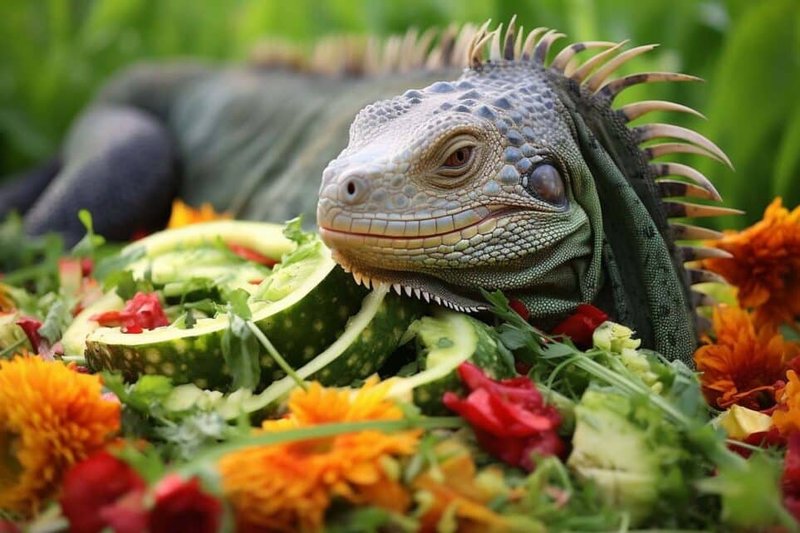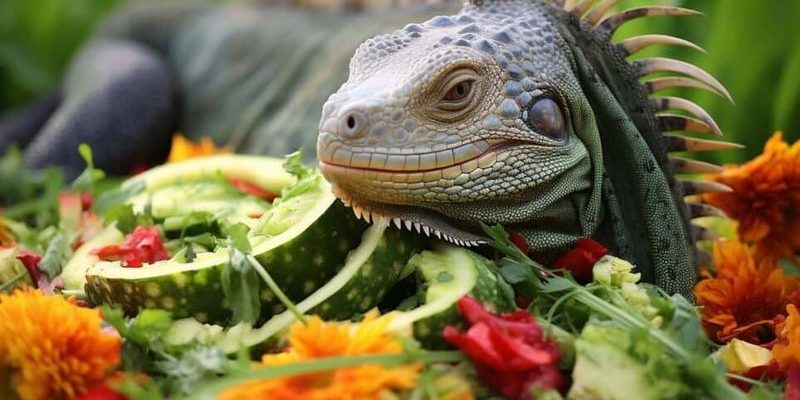
Let’s picture this: every time you sit down for a meal, you want a variety of flavors, right? Well, that’s exactly what these iguanas crave. Their diet mimics this idea, blending different food groups to meet their nutritional needs. In this guide, we’ll explore their dietary preferences, daily feeding habits, and tips on what you can serve up if you’re thinking about caring for one of these fascinating reptiles.
Natural Diet of Spiny-Tailed Iguanas
Spiny-tailed iguanas, also known as *Ctenosaura*, primarily thrive in the wild across Central America and parts of Mexico. In their natural habitat, they feast on a mix of plant-based foods and protein sources. This omnivorous diet is crucial for their growth and health.
Fruits and Vegetables
In the wild, they often munch on leafy greens and colorful fruits. Think of favorites like romaine lettuce, collard greens, and dandelion greens—these not only provide hydration but also essential vitamins. Fruits like mangoes, papayas, and bananas are delightful treats that help in their nutrition too. Here’s a little tip: be sure to chop these items into bite-sized pieces to make them easier for your iguana to eat!
Insects and Protein Sources
But it’s not just greens that fill their plates. Spiny-tailed iguanas also enjoy insects! Crickets, mealworms, and even small snails contribute to their protein intake, supporting their muscle development and overall health. Providing a varied diet that includes both vegetables and protein is essential for keeping your iguana lively and active.
Feeding Your Pet Spiny-Tailed Iguana
Now that we’ve established what they eat in the wild, let’s talk about how you can replicate this diet at home. When you bring a spiny-tailed iguana into your life, you want to create an environment that closely resembles its natural habitat, particularly when it comes to food.
Choosing the Right Foods
You’ll want to stock up on fresh greens and vegetables at your local grocery store. Leafy greens should make up a significant part of your iguana’s daily diet. Aim for a mix that includes dark, leafy types and avoid iceberg lettuce, which has little nutritional value. Additionally, small amounts of fruits can be added as treats but should not exceed 10% of their diet.
Feeding Schedule
Spiny-tailed iguanas are generally more active during the day, so it’s best to feed them in the morning. This aligns with their natural behaviors and gives them plenty of time to munch throughout the day. A good routine involves offering them fresh foods daily while also occasionally introducing insects.
Supplementing Their Diet
Like humans, iguanas often need a bit of extra help to stay at their best. Supplementing their diet can be a smart move.
Calcium and Vitamins
Calcium is crucial for your iguana’s bone health, so consider dusting their greens with a calcium supplement a few times a week. You might also want to use a multivitamin designed specifically for reptiles to ensure they’re getting all the nutrients they need.
Hydration is Key
Always provide fresh, clean water for your iguana. They can absorb moisture from their food, but it’s essential to have water available at all times. Plus, misting their habitat occasionally can help keep humidity levels optimal, which is important for their skin and overall health.
Common Feeding Mistakes
While caring for a spiny-tailed iguana can be rewarding, it’s easy to make mistakes when it comes to feeding. Here are a few common pitfalls to avoid.
Overfeeding
It’s tempting to think that more is better, but overfeeding can lead to obesity and health problems. Always keep an eye on their weight. If you notice they’re becoming less active or gaining weight quickly, it may be time to reevaluate their diet.
Neglecting Variety
Sticking to the same foods day in and day out isn’t ideal. Just like us, iguanas appreciate variety. Mixing it up keeps their diet balanced and can prevent boredom with their meals. Regularly introducing new vegetables and fruits can keep them interested in their food.
Signs of a Healthy Diet
So how do you know if you’re on the right track with your iguana’s diet? There are some telltale signs of a healthy spiny-tailed iguana.
Vibrant Colors and Activity
A well-fed iguana will have a healthy, vibrant color. If your iguana looks dull or lethargic, it might be a sign that something’s off with its diet. You want to see energy when they move around their habitat.
Regular Bowel Movements
Healthy iguanas will have regular bowel movements, which indicates they are digesting their food properly. If you notice changes in their stool, it might be time to reassess their diet.
Feeding a spiny-tailed iguana involves a balance of fresh greens, fruits, and proteins, along with some careful planning and consideration. By providing a variety of foods and ensuring proper supplements, you’ll help your iguana thrive. Remember, observing your iguana is crucial—watch for signs of health and happiness, and adjust their meals as needed.
With the right knowledge and care, your spiny-tailed iguana can lead a vibrant, healthy life, full of those sun-soaked days spent basking and happily munching. After all, feeding these fascinating creatures is all about giving them what they need to flourish. Happy feeding!

